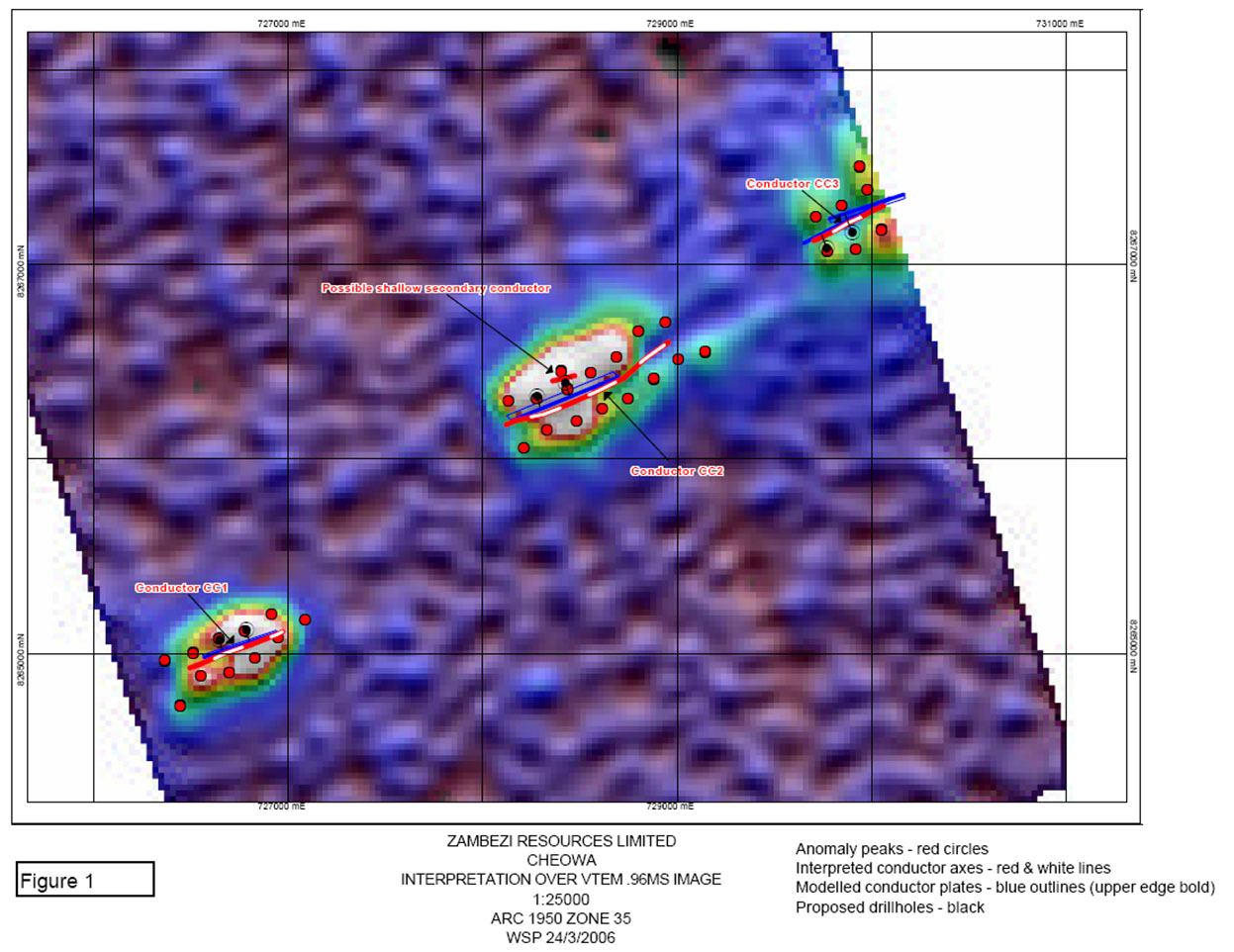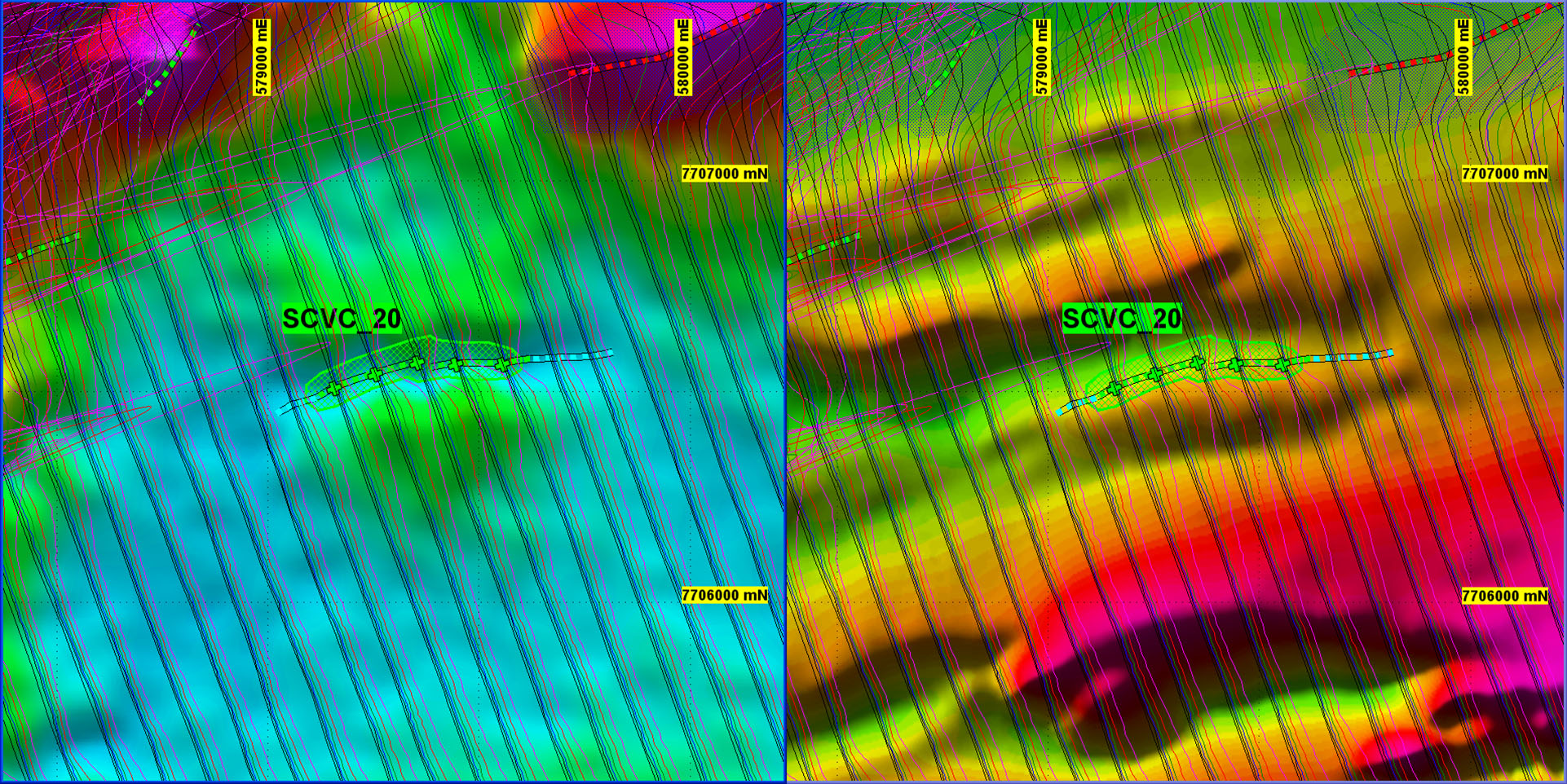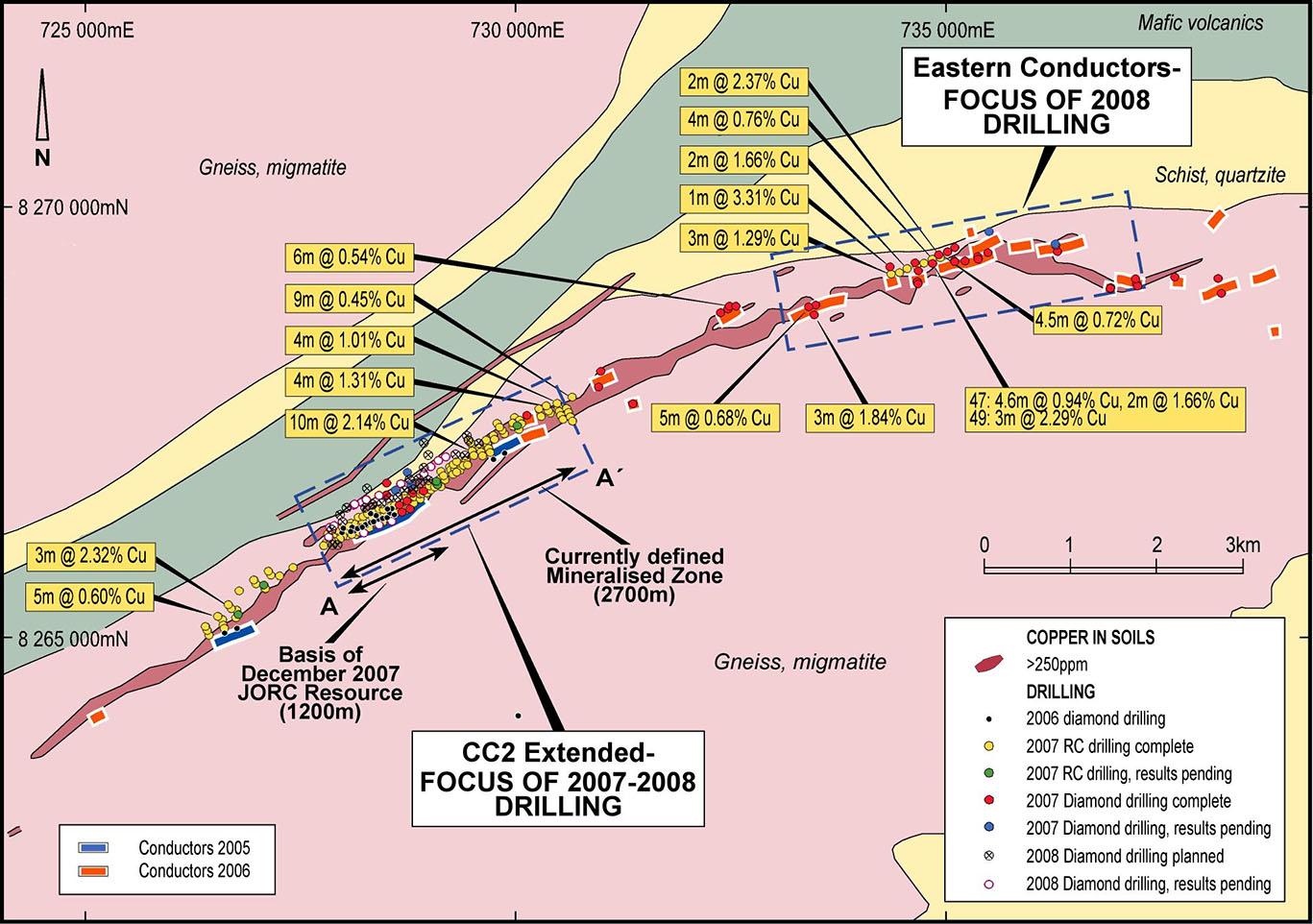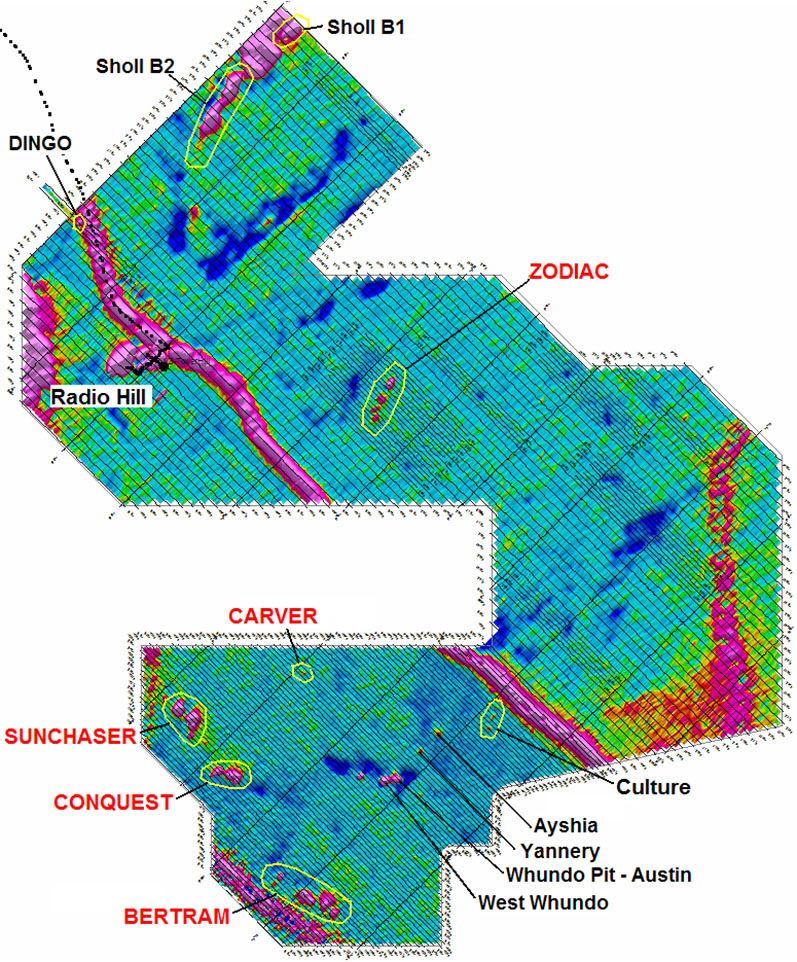For a PDF of this paper click here
Introduction
The conductive overburden found on the African and Australian continents are normally considered a challenge for airborne EM surveys, severely limiting the depth of investigation and reducing anomaly amplitudes of basement conductors. However, interpretation of airborne TDEM data acquired with the VTEM system has led to the discovery of a number of base metal deposits in Africa and Australia over the last three years. These successes are ascribed to a combination of the VTEM’s high signal to noise ratio and interpretation skills of experienced geophysicists. Examples of these discoveries include Bertram NiS and Sunchaser VMS (Fox Resources) and Balla Balla (Straits Whim Creek Copper) in Australia as well as a discovery in Zambia for Zambezi Resources Limited. These will be discussed in terms of their geological setting, TDEM response signatures and interpretation procedures which were followed.
Key Words: VTEM, Base Metal, Africa, Australia
Cheowa Prospect (Zambezi Resources Limited)
Geological Setting
The Cheowa Project is a copper-gold project southeast of Lusaka in Zambia. The mineralisation is hosted within biotite schists. Pyrite, chalcopyrite and pyrrhotite have been encountered in historical drilling on the prospect.
VTEM Survey
A VTEM survey flown in 2005 was designed to test for conductive massive sulphides over a small section of the mineralised belt as a trial. This was done with the “dBdt-only” VTEM system. A nominal flight line spacing of 150m and sensor height of 30m were employed. Based on drilling results a follow-up survey was done in May 2006.
Interpretation
Three discrete late-time conductors were identified (Conductors CC1 – CC3) along the trend of the known mineralisation in the first survey. The location of these is shown superimposed on the mid-time VTEM response in Figure 1. The conductors were modelled using EM plate modelling software and two drill holes were designed for each conductor.
Drilling Results
Commenting on 8 June 2006, Julian Ford, Managing Director of Zambezi, said: “The limited diamond drill results to date have confirmed mineralization over significant down-hole widths of 27 metres in the first hole, and 34 metres in the second hole. Importantly, preliminary results show that we have increased the cumulative strike length of VTEM anomalies by just over four-fold. I am pleased with the progress at Cheowa and the fact that VTEM is proving very efficient at targeting our drilling.” (http://www.infomine.com/index/pr/Pa430504.PDF)
A summary of the conductors and drilling results following the 2006 survey is shown in Figure 2.

Figure 1: Location of modelled conductors superimposed on mid-time VTEM response, 2005 survey (after Peters and Mutton, 2006).
Balla Balla Prospect (Straits Resources Limited)
Geology
The Balla Balla VHMS prospect lies 2 kilometres, and 6 kilometres, east of the West Balla and Salt Creek VHMS prospects respectively, and is interpreted to lie within the same prospective horizon. They are located within the Cistern Formation and Rushalls Slate sedimentary members, which are part of a series of rift-related felsic, intermediate and mafic volcanic rocks known as the Whim Creek Group. The ore deposits are classified as supergene oxide copper deposits and are primarily composed of weathered copper sulphide primary ores now present as a variety of copper carbonate minerals and secondary sulphides – primarily chalcocite – hosted within slate and conglomerate.
VTEM Survey
Standard VTEM survey parameters were used for the Balla Balla project which was flown in September 2007. The system used at the time did not yet measure B-field data. A transmitter current of 155A resulting in a dipole moment of 330 000 NIA was used.
Interpretation
The Balla Balla conductor was picked and modelled based on the EM and magnetic data. The position of the conductor is outlined and overlayed on VTEM channel 23 response as well as magnetic data in Figure 3.

Figure 3: VTEM profile response and interpreted Balla Balla conductor on VTEM channel 23 contours (left) and magnetic data (right).
Drilling Results
“Recent reverse circulation and diamond drilling of the Balla Balla VHMS prospect has intersected a coherent massive sulphide lens consisting of sphalerite, and galena over a strike length of greater than 400 metres, to greater than 200m vertical extent, with some zones of copper sulphide mineralisation within the horizon. All holes were drilled from the hangingwall through to the footwall which showed typical VMS alteration and morphology. Typical VHMS ratios and abundance of Zinc, Copper and Lead were seen in all holes, supporting the interpretation of this mineralisation as a VHMS system. At this early stage of exploration there appears to be a single, steeply south-dipping, massive sulphide lens which is zinc rich with a number of copper rich sections.“ (http://www.straits.com.au/files/News/2008/SRL_Balla%20Announcement_!20080606.pdf)
Bertram Prospect (Fox Resources)
Geological Setting
The Bertram NiS discovery is hosted by a discrete ultramafic sequence situated between the large Munni Munni mafic-ultramafic intrusive complex and the Whundo VMS deposits. High MgO metamorphic olivine/serpentine-rich rocks are present at Bertram and have been encountered in drillholes and outcrop, these are intimately related to the defined nickel sulphide. The local ultramafic sequence is highly magnetic and is clearly thicker where nickels sulphides have been encountered to date (ie. potential embayment).
VTEM Survey
A total of ~1666 line kms of VTEM surveying (231 survey lines) was completed by Geotech Limited in August 2006.
Interpretation
Regional VTEM surveying during 2006 defined five new anomalies of potential interest – Zodiac, Carver, Bertram, Conquest and Sunchaser. All defined VTEM anomalies were refined using fixed loop TEM and provided a number of drill targets. The conductors at Bertram range from approximately 30 to 175m below surface and the largest conductor has a strike length of up to 150m.
Drilling Results
“Drill testing to date has only tested the Bertram, Conquest and Sunchaser targets and these have resulted in new Cu-Zn and NiS occurrences. A historical diamond drill hole, WSP-10, was drilled in the late 1960’s at the Bertram prospect and intersected 1.8m @ 3.4% Cu from 22m down hole and 3.6m @ 0.65% Cu from 33m down hole. Last year, Fox undertook a geochemical surface sample program over the Bertram conductors with very encouraging elevated nickel values of up to 0.25% nickel being reported. The Company has confirmed through drilling that it now regards Bertram as a significant new nickel and copper occurrence.” (http://www.foxresources.com.au/documents/347.pdf)
Acknowledgements
The authors would like to thank Zambezi Resources Limited, Straits Resources Limited and Fox Resources for their permission to present the data in this paper.
References
Peters, W. S. and Mutton, P., 2006. SGC Report No. 1630: Zambezi Resources Limited Cheowa Project. Southern Geoscience Consultants: unpublished

